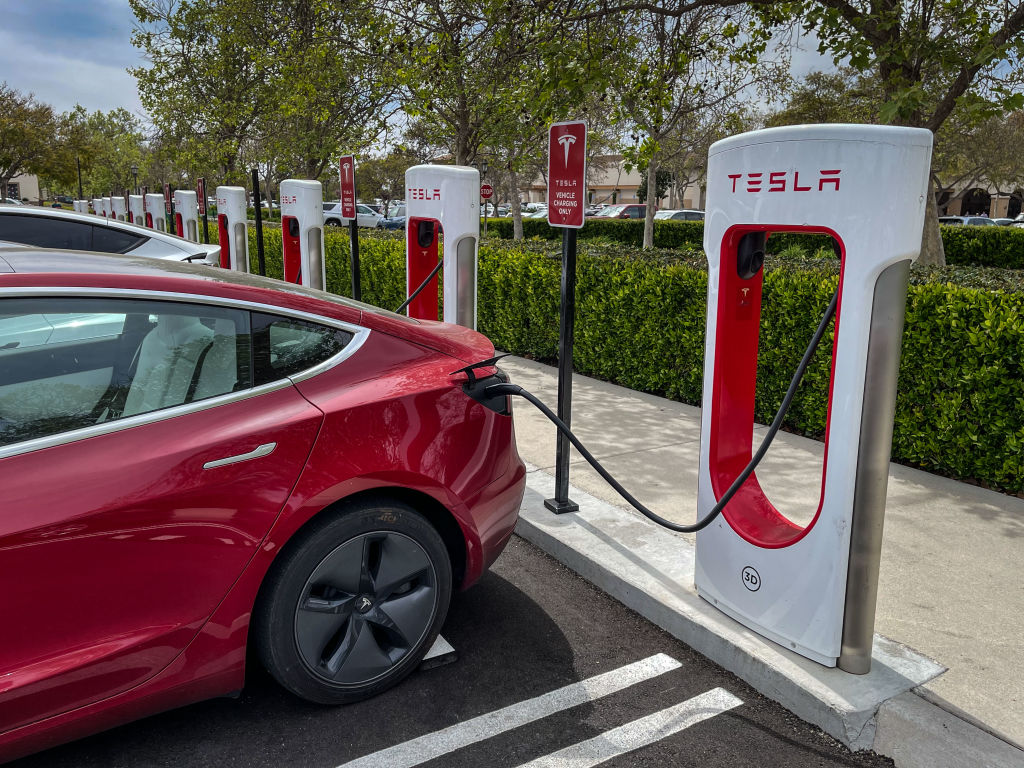
Source: George Rose / Getty
Anationally representative survey of 8,027 Americans shows that across all racial demographics, overall interest in purchasing electric vehicles is high. Among those surveyed, 33% of white respondents, 38% of Black respondents, 43% of Latinos, and 52% of Asian Americans say they would “definitely” or “seriously consider” purchasing or leasing an EV as their next vehicle.
The survey was conducted by Consumer Reports, with input from the nonprofit advocacy groups GreenLatinos, the Union of Concerned Scientists, and EVNoire and administered between Jan. 27 and Feb. 18, 2022, by NORC at the University of Chicago, an objective, nonpartisan research organization.
Electric cars are critical for reducing transportation emissions, but communities of color currently adopt this key technology at lower rates than white drivers. This survey, for which I was an adviser, helps to shed light on some of the reasons for this disparity.
Cleaner air for all
Air pollution in the U.S. disproportionately affects communities of color. To take just one statistic, Latino children are about three times more likely than non-Hispanic white children to live in a county where air pollution levels exceed federal air quality standards.
Transportation is a major source of harmful air pollutants, particularly nitrogen oxides. These compounds contribute to the formation of ground-level ozone and smog, which can cause or worsen many types of respiratory diseases.
Motor vehicles also emit soot and toxic compounds. Because of these pollutants, people who live near roadways are at elevated risk of ailments including heart disease, impaired lung development in children, preterm and low-birthweight infants, childhood leukemia, and premature death.
Transportation is also the largest source of global warming emissions in the United States. Light-duty passenger cars and trucks contribute 58% of transportation’s greenhouse gas emissions. Weather-related events such as heat waves, air pollution, and flooding can be exacerbated by climate change and disproportionately harm U.S. communities of color.
Where can we plug in?
Ours was the first consumer-oriented survey to analyze barriers to EV adoption along racial demographic lines. The goal is to help policymakers and advocates better understand why Black and Latino consumers are buying fewer EVs than white consumers and what concerns explain this gap.
We found that charging EVs at home – the most affordable way to charge EVs today – is not an equally viable option for all communities, particularly those with higher proportions of renters or multifamily dwellings. People who own their homes can much more easily have EV charging equipment installed on the premises and use it to charge their cars safely and conveniently overnight.
In our survey, nearly 75% of white respondents owned their homes, compared with fewer than 50% of Black respondents and slightly over 50% of Latino respondents. Multi-unit dwellings, such as apartment buildings, often do not offer EV charging for residents. We found that increasing affordable, accessible, and reliable public EV charging infrastructure in safe locations would address all of these groups’ biggest concerns about EV charging.
The survey findings also suggest that improving access to financing and incentives for both new and used EVs would help to accelerate EV adoption.
Getting the message out
Our results show that increasing access to EVs is a key way to educate communities about the benefits of driving them. But it’s not clear yet how to create education and engagement initiatives that focus on Black and Latino consumers and target their specific needs and concerns.
Finding better ways to include Black and Latino communities in the EV transition is important because it can help to address gaps and mitigate systemic barriers to adoption and achieve environmental justice.
Providing help and incentives for apartments and condominiums to install EV chargers will help reduce barriers to widespread EV adoption. Our survey showed that Black and Latino drivers are more likely to use public or on-street parking, so incentives to support the build-out of publicly accessible charging infrastructure are also critical.
Purchase incentives that are more accessible and target buyers at more income levels will bring EVs within reach for more people. For example, tax credits could be made refundable, allowing people without sufficient tax liability to still take advantage of the credit, or incentives could be made available at the point of sale.
We plan further research that can identify ways to overcome the barriers spotlighted in this survey and help create a just and clean transportation future for all.![]()
This article is republished from The Conversation under a Creative Commons license. Read the original article.
![]()
SEE MORE:
More Black Employees Hit Tesla With Latest Racial Discrimination Lawsuit
After Verdict Slashed By $122M, Black Man Suing Tesla For Racism Demands New Trial

















